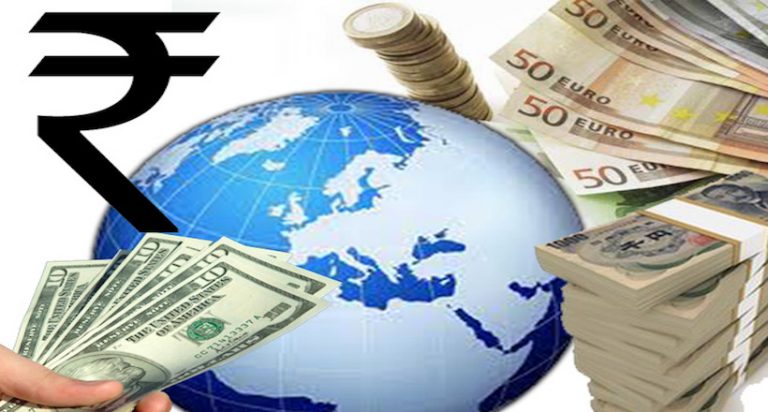How the value of rupee is determined?. It’s a very common doubt that comes into mind if you think about the daily news in the print and electronic media about the value of rupee in terms of dollars and vice versa. Well , it may be a mysterious question to some one who doesn’t have a basic awareness about a country’s ecosystem. I heard someone questing his friends “why do we need to worry if the value of rupee increases from 55 to 60 per US dollar ?” Instead we have to feel very happy as the rupee value increased from 55 to 60 i.e by 5 rupees..!!
To someone who always deal with the stuff related to economy, trading, investment, international business conditions, this will be definitely an annoying question.
So here in this article, I’m going to discuss how the value of a country’s currency is determined in terms of foreign exchange?
The value of the currency of a country against another depends upon many variables. Among those factors two market forces demand and supply of the currency, is key determining factor. Now you can scroll down below and check more details regarding How the value of rupee is determined?
How the value of rupee is determined?
Demand and supply :
If the demand for a currency against another increases then the value of the former increases relatively to the latter.
For instance if the demand for US dollars $ increases in India then the value of rupee will decrease obviously. Here it’s very important to understand the supply and demand scenarios of a currency.
For example if there’s a good amount of inflow of dollars $ into Indian economy then the demand for rupees increases as the $ are required to be converted into rupees. Then the demand for rupee increases thus it results in an increase in the value of rupee.
Besides this demand and supply Principle there are many drivers that force the value of currency up and down. Some of those factors are :
Must Read – Merchant Banking
(1) Market psychology :
If the investors feel that the market where their investments are, in down trending situation then they will first search for a relatively low risk and less volatile market to move their investments in order to avoid the losses. For example when the foreign Institutional investors in India identify a sign that Indian markets are going to move towards down then they will realise their investments in the Indian market to move onto a more stable economy like US. Then the demand for the rupee will decline which results in strengthening the value of US $ in terms of rupee leaving rupee depreciated.
Must Read – Banking in India
(2) Fiscal policy :
In the fiscal policies if the government plans to borrow a debt from international funding agencies in order to meet the gap between revenue and expenditure then it results in high demand for dollars in terms of which the most of the international debts are granted.
This result in an obligation to pay the cost of the debt in dollar. And if the government wants to buy more amount of crude oil and petroleum , it also results in high demand for US dollars. Eventually the demand for dollar will deprecate the value of rupee.
(3) Interest rates & Average rate of return :
If the government is able to give an interest rate on the bonds and instruments issueed by it , which is enough to cover the international market risk then the foreign investments will flow into India in terms o f dollar. Thus the supply of dollars in India increases which results in strengthening the rupee.
If the stock markets are enough to give the consistent average return on the investment which is not less than the foreign markets, then it attracts the foreign Institutional investors into Indian market thus results in rupee appreciation. So we can say that the value of rupee depend upon the economic health of the country.
Must Read – Various Terms of Banking
(4) Imports and exports :
When the volume of the Imports into a country increase than the exports made out then it would definitely results in depreciation in rupee’s value. For example if a company wants to import something from US then it has to pay the supplier in US$ only. So it has to purchase dollars by paying rupees.
In the cases where the exports are not enough to cover the cost of Imports then the supply of dollars into India will be considerably lower. But the demand for dollar will be on increasing trend. This it results in paying more rupees for purchasing 1 US $. Eventually it leads to decline in the value of rupee.
Apart from the factors Stated above there many other aspects which determine the value of rupee.
Recommended Articles
